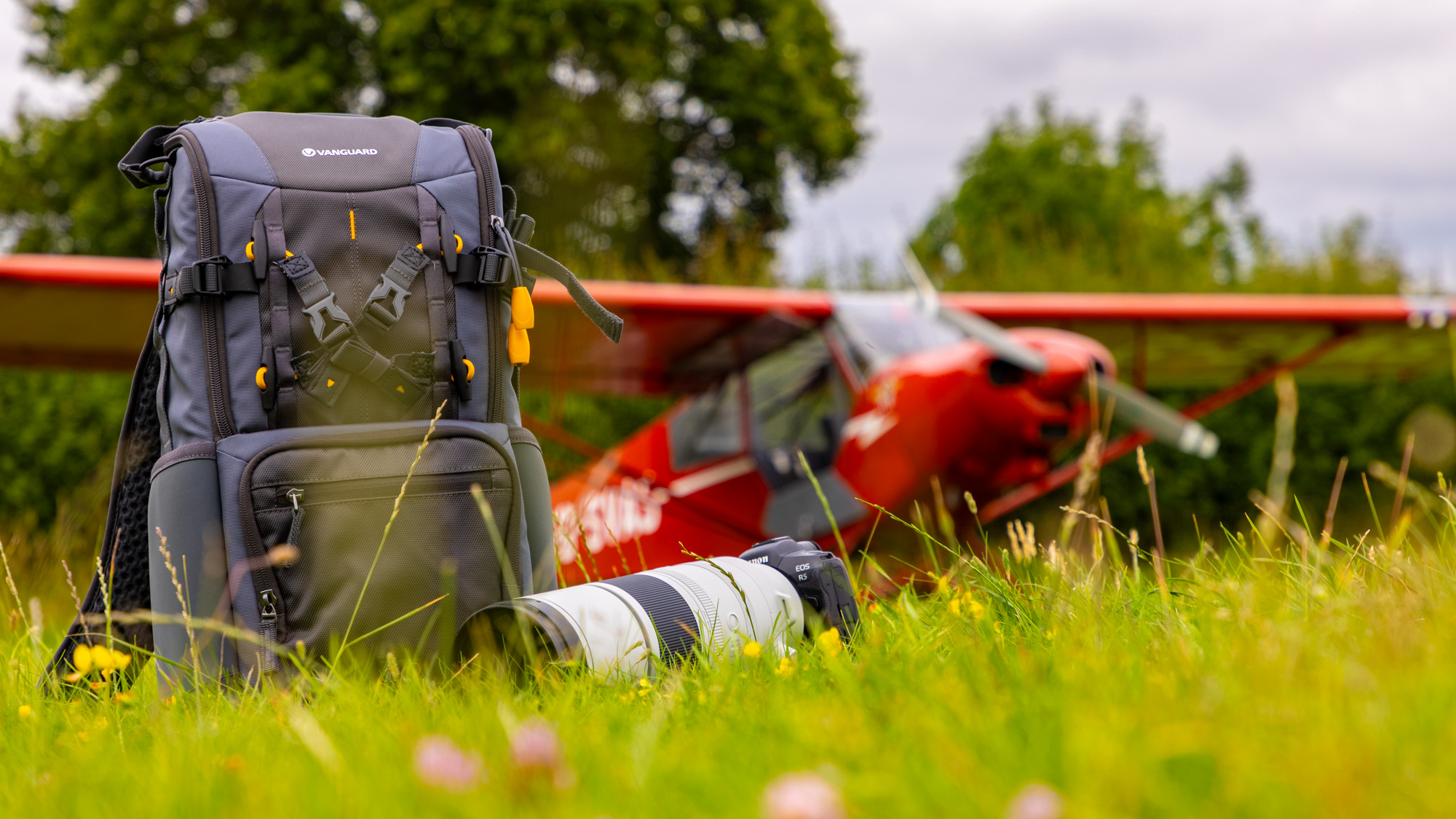
With a long and slim build Vanguard's Alta Sky 42 has been specifically designed for photographers who wish to travel with their camera attached to a long telephoto lens in situ. Vanguard says the backpack is ideal for lenses such as the Sony FE 200-600mm f/5.6-6.3 G OSS, Canon RF 200-800mm F6.3-9 IS USM, Nikon Z 180-600mm f/5.6-6.3 VR or Sigma 150-600mm f/5-6.3 DG DN OS | Sports as the perfect accompaniment.
With a capacity of 17L, it’s also the smallest and most affordable rucksack in Vanguard’s current Alta Sky lineup costing £179.99, with other shapes and sizes available in capacities of up to 36L, with the largest Alta Sky 68 model costing $299.99 / £269.99 which is designed for mammoth 800mm primes.
Vanguard has found a bit of a gap in the competitive camera accessories market as there isn't a huge amount of options catering to super zoom lenses. In terms of alternatives, there’s the Lowepro Flipside 500 AW II ($159 / £199) and Lowepro Lens Trekker 600 AW III ($219 / £289), then there’s the Think Tank Glass Limo which costs $275 / £256 and it's also worth considering the Tenba Axis v2 LT 20L which retails for $230 / £180.
Specifications
External dimensions (WxDxH): 270x240x505mm
Internal dimensions (WxHxD): 235x150x470mm
Size options in range: 17L, 22L, 24L, 32L, 34L, 36L
Bag type: Backpack
Camera access: Top and rear
Laptop compartment: Up to 12.9” tablet
Tripod fastener: Yes
Chest / Waist straps: Yes, both
Rain-proof cover: Yes
Weight: 1.9Kg
Build & Handling
The Alta Sky 42 may be the smallest backpack in Vanguard's range at just 17L but it manages to pack in a spec sheet brimming with useful features.
Made in Myanmar, it's constructed from a hardy polyester designed to be tough and weatherproof. It also features a built-in rain cover hidden behind the rear padding - this is our preferred solution, as opposed to finding space for it inside the internal compartment.
On the front is a large pocket that unzips in two different ways. The first, smaller pocket has room for keys, documents, or other small items. The larger front pocket reveals netting for batteries or other chunky accessories and has dedicated red and green pockets for full or empty memory cards.
The front pocket is also where the tripod attachment is neatly tucked away behind when it's not in use. This simply pulls out for the feet of a full-sized tripod feet to rest in, it's then secured to the upper section of the front via two straps which are on toggles and can be removed or reconfigured.
On the sides of the Alta Sky 42 you'll find two large stretchy neoprene pockets for 2L water bottles. Alternatively, they could easily take a leg or two of a smaller travel tripod as there are straps at the top to lash it in place if you'd prefer to side-mount your tripod instead. However, for reasons that we'll come onto later, we prefer to use the front tripod support instead.
On the top panel, there is yet another small zippered pocket for accessories and also a very sizeable carry handle. This strap appears to be made from the same stretchy neoprene material as the side pockets, so it's very soft and comfortable to use when picking up your full bag. However, its large size is also a bit of an issue as it gets in the way of the zips and access for the top opening, which should be the most convenient way to grab your camera quickly. The strap isn't removable either, so while I can see the positives of having a carry handle, for me it did more harm than good.
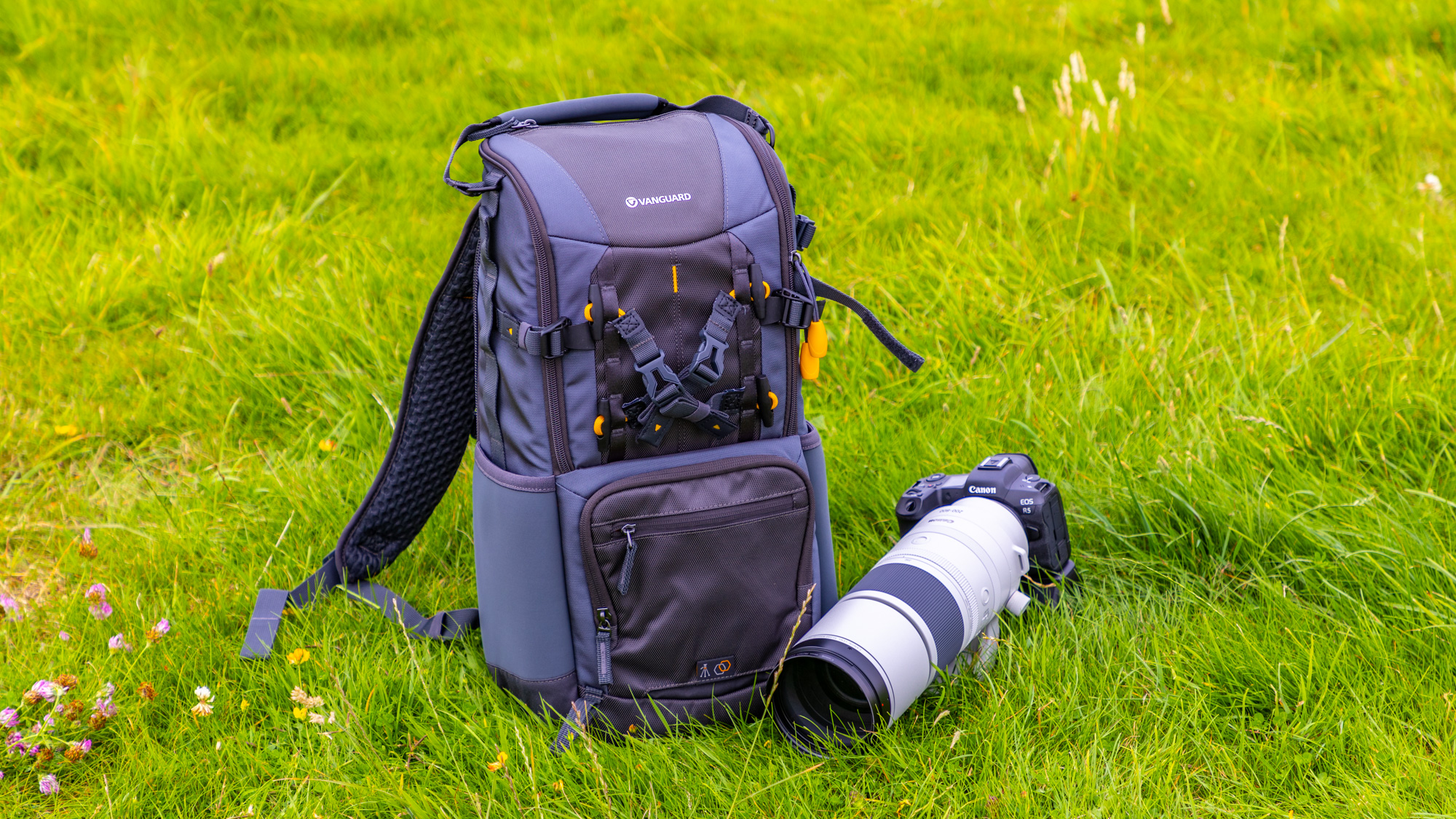
Now let's turn our attention to the interior. There are two ways you can get inside of the Alta Sky 42. The first is via the back access which zips around the Air System padding to fold it forward and gain entry and gives you access to most of the bag internals. Its design makes it a bit awkward to get to anything in the very upper section. This part is more easily accessed however by the top access, which unzips with about half of the front of the bag folding forward, allowing you to gain entry to the top section.
The most practical solution here is to load up your bag from the rear with any extra lenses, or spare camera bodies inserted in the spaces provided, or with your preferred divider setup. But when you're out on a shoot you really want to be using the top access instead as this allows you to grab your camera with your long telephoto lens already attached.
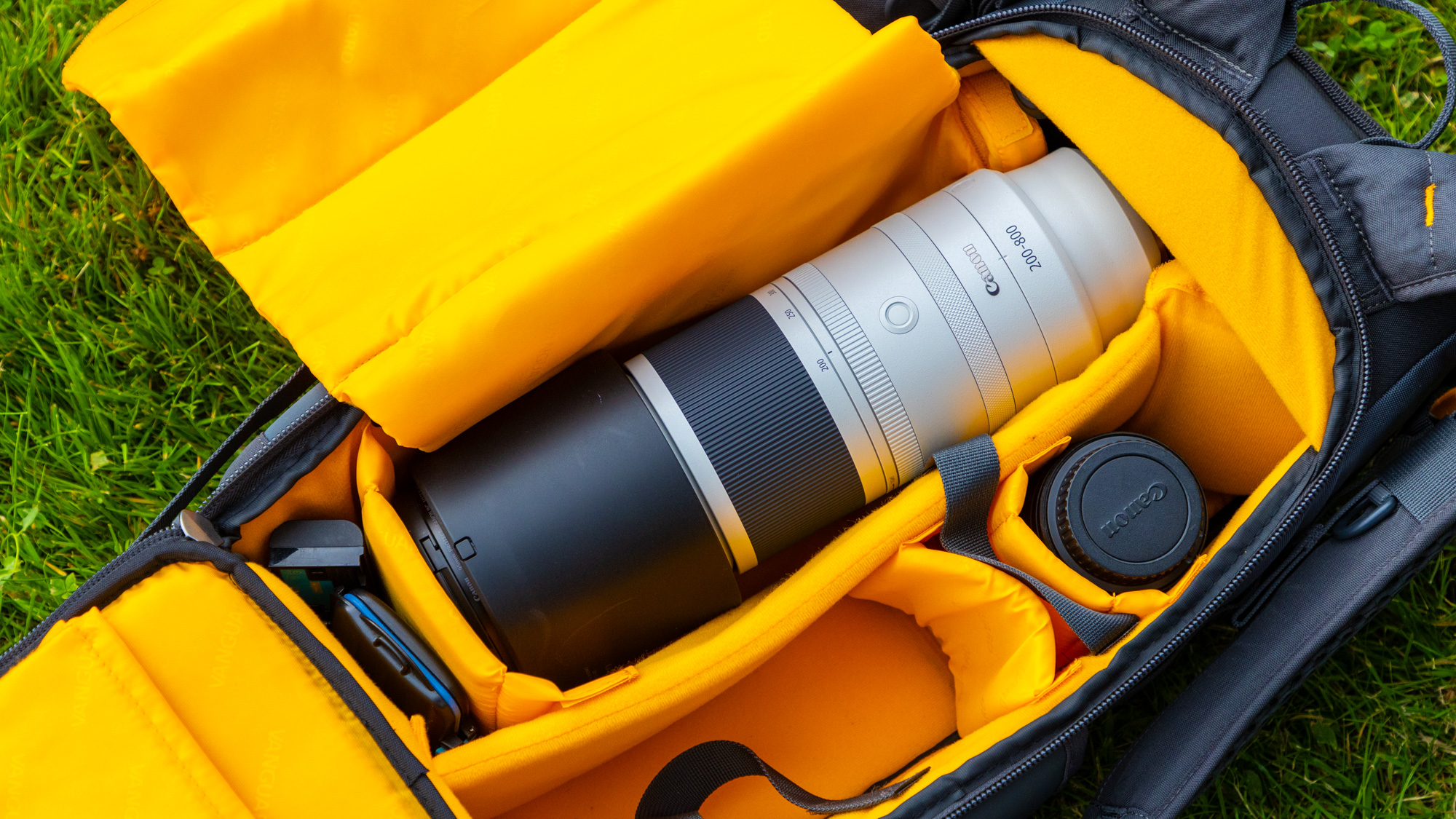
The interior takes the form of Vanguard's iconic bright orange interior which makes it a bit easier to see your kit in the dark. Padding is nice and thick around the outer shell so you can be confident your gear will withstand knocks and dings. The interior dividers are slightly thinner than we've seen in previous bags, but still perfectly functional and there's plenty of them too.
You can't get too creative with the internal setup, after all, it's specifically designed to cater to a long lens with a body in situ, so your other lenses and equipment need to fit around this. It's not an issue though, we comfortably fit our Canon EOS R5 with a Canon RF 200-800mm f6.3-9 IS USM lens attached, which is one of the largest lenses Vanguard recommends using with the Alta Sky 42. We then still had space around it for a full-frame back-up body and about five extra lenses, though it comes with seven dividers so you could fit more smaller items if you wanted to.
On the inside of the top flap, there's a zippered pocket for accessories, though it's not really suitable for anything chunky. Paper and documents or even cables will be okay but when we tried putting spare batteries in it they butted up against our camera body and made it too tight to close the top section, so it's best to use the dedicated front pocket instead for this.
Lastly, the interior has a padded pocket for a tablet up to 12.9". As the bag is tall and thin it can't take a laptop or anything larger than this tablet size which could be a drawback if you need to edit, or backup shots on the move.
Performance
During testing we found the Alta Sky 42 to be very comfortable to wear. It has an 'advanced' ergonomic back and harness system features a well-padded breathable 3D back, uniquely shaped easily to adjust shoulder straps that contour to your back and torso. The back padding has a dimpled design which is good for allowing airflow and keeping you cool.
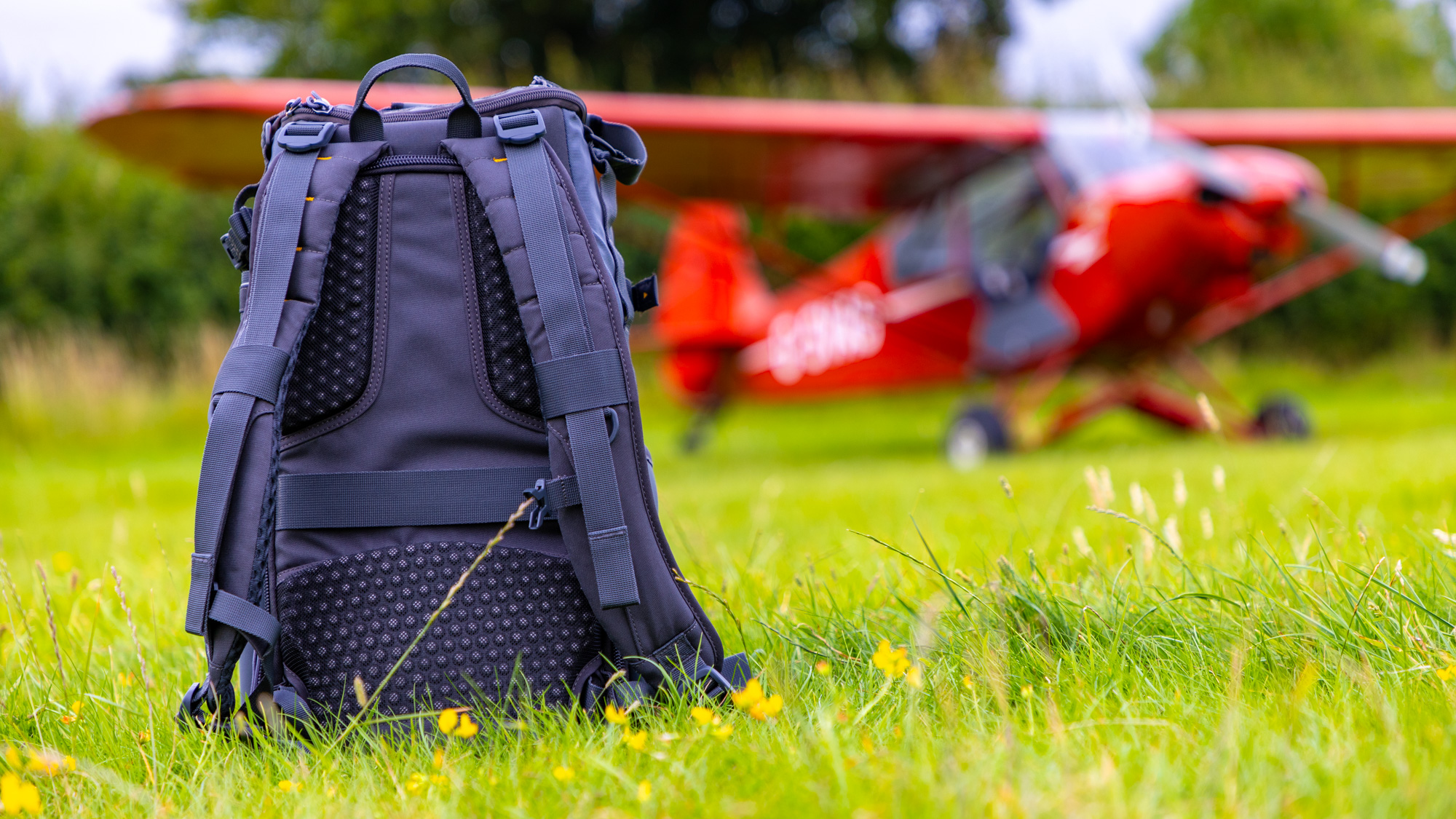
There's an adjustable sternum strap and waist belt which tucks away not in use. However, as the waist straps can be tucked away this means there is no padding on them. Padded waist straps such as those found on the recently reviewed Lowepro Flipside 400AW III for example, help take the weight of the bag from your bag onto your hips, so it might not be as comfortable as other backpacks on very long treks and hikes as it does feel a bit like putting a car seatbelt around your waist.
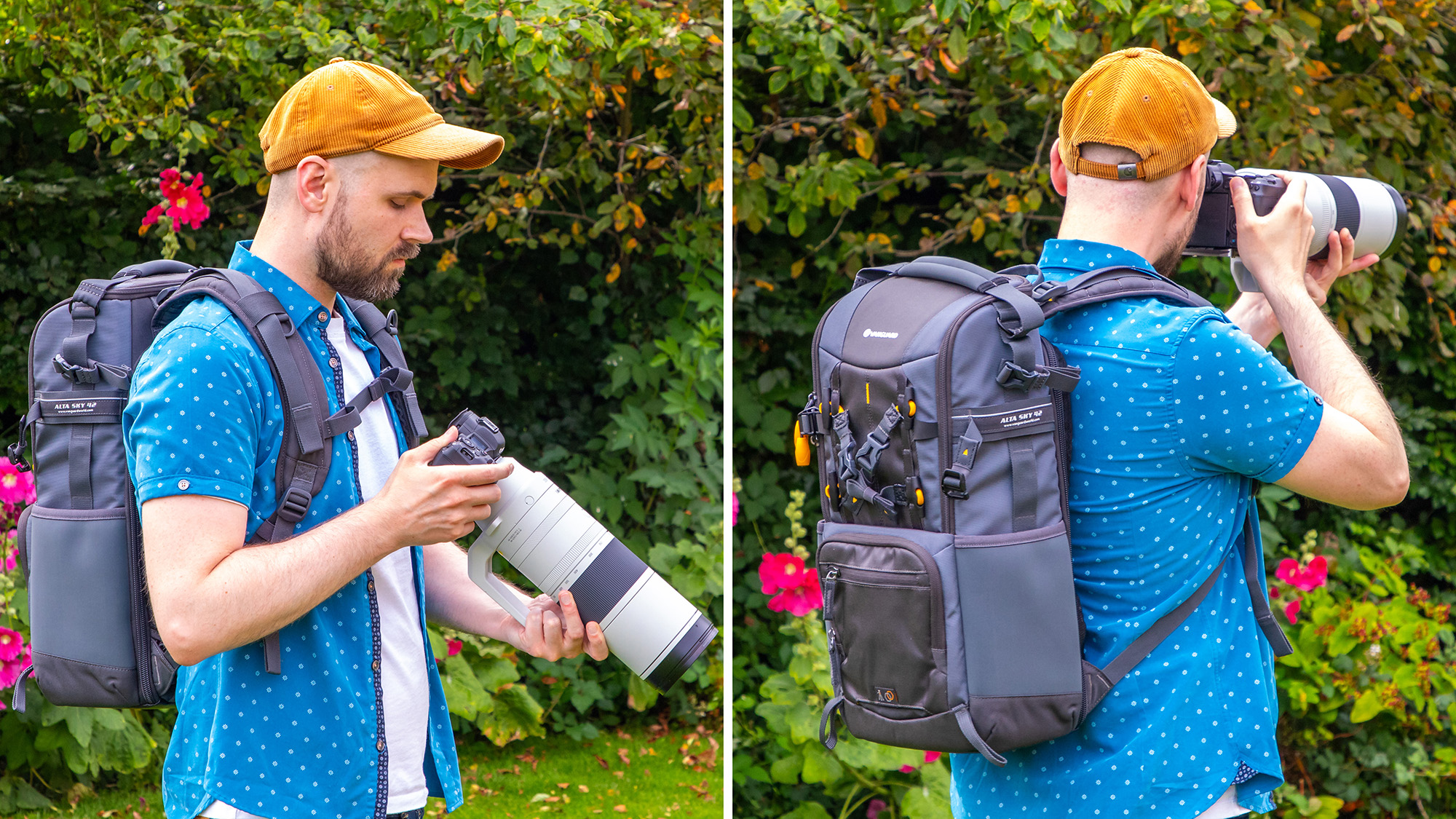
We took our Vanguard Alta Sky 42 to an airshow, the perfect environment for using a long lens, so we loaded it up with our Canon EOS R5 and RF 200-800mm lens, plus a backup body and accessories. This was easily within the bag's impressive maximum load capacity of 12 kg.
I also fitted my Canon EOS R5 with a battery grip to give me extra juice so I didn't need to worry about swapping batteries, though this did make closing the top compartment a real squeeze and meant you couldn't put anything too bulky in the top pockets. It also means larger bodies like DSLRs or DSLRs with a grip are more likely to cause issues too depending on the lens attached and space available.
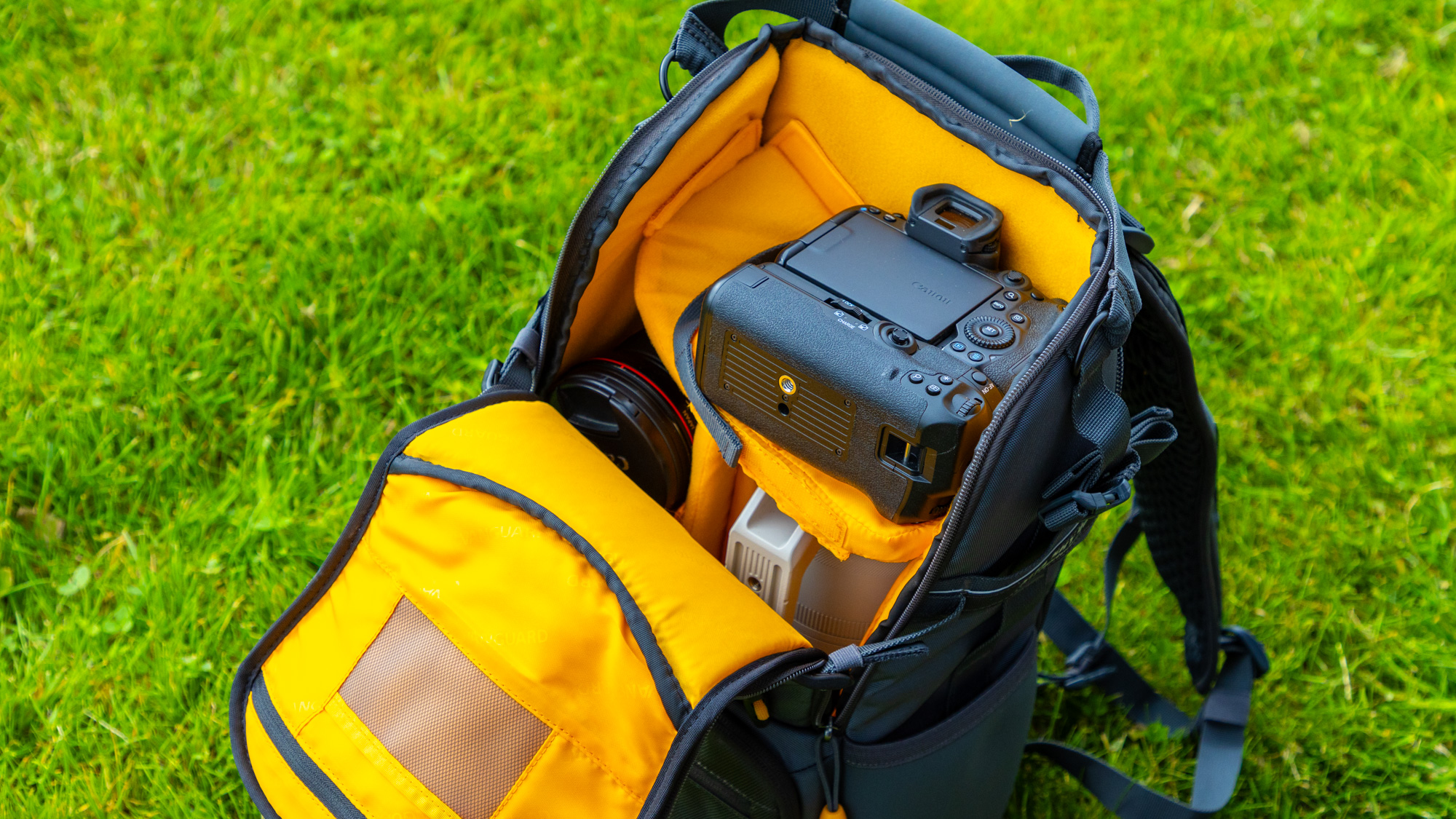
As previously mentioned there's a huge number of pockets, buckles, zips, and straps - on paper, this sounds impressive, but in practice, I found it to be more of a hindrance than useful, sometimes less is more. The biggest offender here is the large top handle. While I appreciate the ability to have a sturdy handle to carry the bag is a nice feature to have, it gets in the way of opening the top compartment - which is the best access to your camera and main lens. It's also fixed in place with no way of removing it, so it's tempting to cut it off or tie it back somehow.
It's a similar story for the lashing straps on the front which connect from the bag sides to the front panel - this makes it a real pain to get the zips to the main compartment past unless you want to unclip and then re-clip these buckles every time you do so. It's not ideal and creates extra noise and faff which could potentially spook off a skittish subject when you're trying to get your long lens out to photograph it.
During testing, I was impressed with the backpack's rigidity and build quality. It's very resistant to water and also comes with a dedicated rain cover which enhances this further, so you can be confident that your kit will protected in a heavy downpour. The base of the bag is also reinforced with a more hard-wearing material, good for protecting your kit when you put it down on wet or rocky ground.
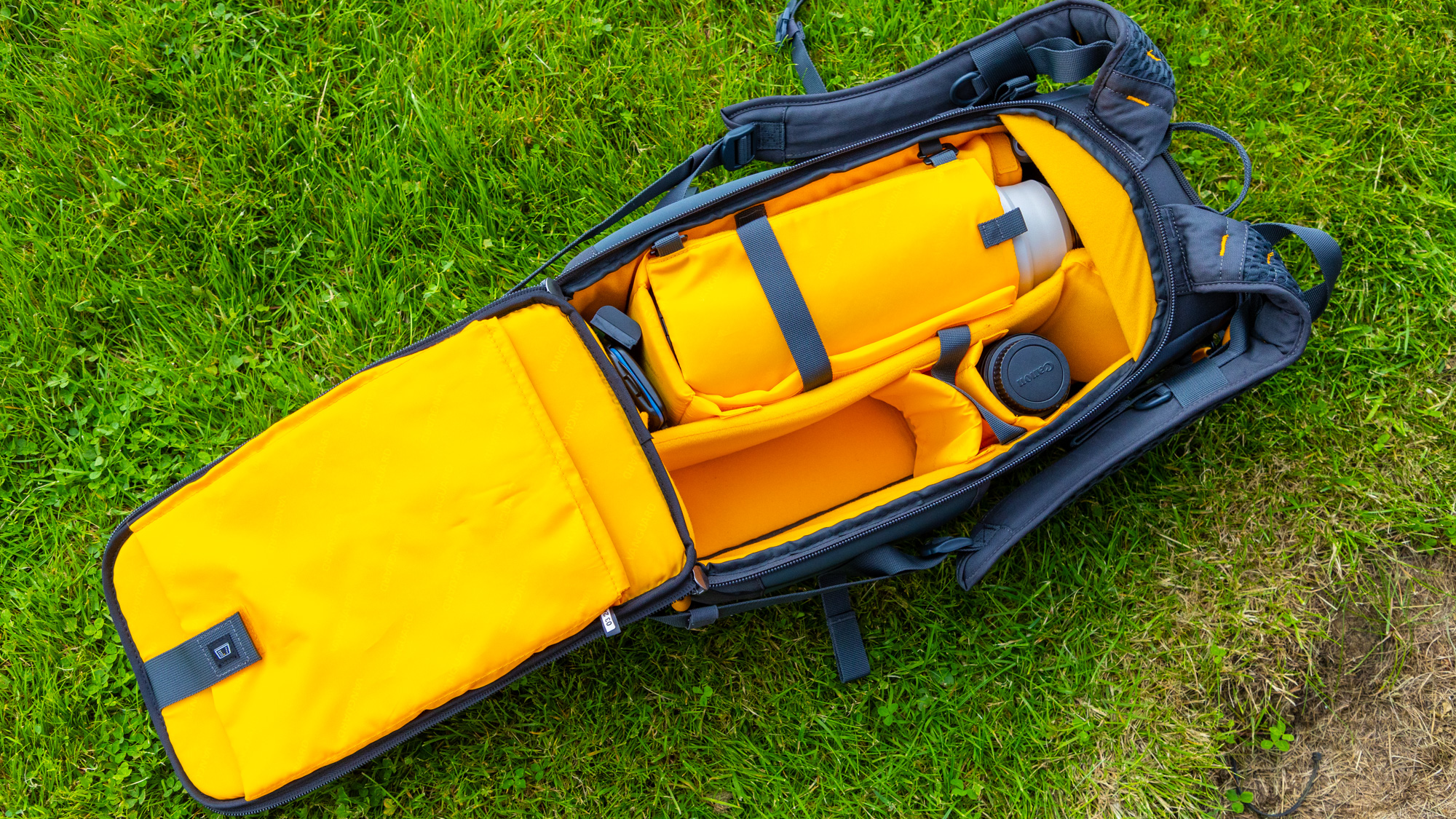
The internal padding does a good job of keeping your kit protected, though there are two optional extra pieces of padding that I couldn't quite get along with. The first is a padded sleeve that wraps around your lens or spotting scope in a bid to stop it from bouncing around too much inside of the bag. I found this a real faff to use and also a little pointless as you can adjust the main internal divider to accommodate different-sized lenses anyway.
The second is a padded collar that supports the bridge between the lens and the camera body. Initially, I liked this idea, but in use, it was yet another obstacle that got in the way of me reaching for my camera. It has to be removed to take your camera and lens out, and as it's velcroed in place, removing it has the very real possibility of scarring away wildlife, though this obviously won't be a problem if you're using your long lens to photograph something like sports or motorsports.
Verdict
While I've been critical of some of the more over-engineered design aspects of the Vanguard Alta Sky 42 backpack, my overall experience was still largely positive, and some of the straps, handles, and padding could be removed, tied back, or completely ignored to make it more seamless to reach for your camera with the lens attached.
It will be an ideal choice for those sports or wildlife photographers with long lenses such as the Sony FE 200-600mm f/5.6-6.3 G OSS, Canon RF 200-800mm F6.3-9 IS USM, Nikon Z 180-600mm f/5.6-6.3 VR or Sigma 150-600mm f/5-6.3 DG DN OS | Sports. There are not too many bags on the market that cater to these superzoom lenses, and although the Alta Sky 42 isn't an impulse purchase it is notably less expensive than other similar bags on the market.
Should you buy the Vanguard Alta Sky 42?
✅ Buy this if...
- You want a backpack that allows you to pack your bag based around your camera and long zoom lens combination
- You're looking for a comfortable and weather resistant bag for big zoom lenses
🚫 Don't buy this if...
- You’re not going to be using a long lens like a 150-600mm, or if you have an even larger lens such as an 800mm prime as you might need something bigger
- You need padded waist straps for longer journeys
- You need to accommodate a large laptop







